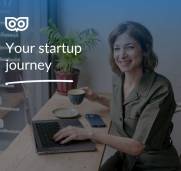
7 design tips to create a search engine friendly website
A guest post by Sam Sayer
For your business to succeed online, you will need an appealing website that generates high search traffic.
Otherwise, people won’t visit your site or purchase your products and services. Therefore, in order to attract as many people as possible, you need to ensure that your website is:
- Search engine friendly
- User-friendly
You can accomplish these objectives by implementing the following advice.
The website design should be simple
Many businesses tend to fill their websites with too much clutter. Naturally, you will want to highlight all the fabulous things your business can do, but too much information may confuse your leads and customers. Sites with simple designs are more likely to be successful compared with ones that come with all the bells and whistles. This makes sense as visitors won’t want to waste time looking for the content they are interested in. If they can’t find it quickly enough, they will leave the site immediately.
As a result, you need to ensure that your core message, value proposition and unique selling points (USP) are clearly displayed on your main page. You can offer your other products and services on other pages since they are not the primary reason for people visiting your site.
Select CTAs that will lead users to the sales funnel
According to this blog, call-to-actions are the tools you use to lead visitors to your sales funnel. You should use the CTAs to tell users what to do next.
An excellent example of a CTA is on the Spotify website; on the homepage, you will immediately notice the CTA – ‘Get Spotify Free’. This is a simple strategy and it also tells visitors exactly what they will receive before they purchase the paid version.
For example, a previous client of our SEO partner Tom; Simone Douani executive, business, corporate and performance coach, has a prominent link from the main navigation to book a Free Consultation, which is an excellent CTA.
Design the website for your leads and customers
Any animations, colours, images, fonts and other gimmicks should appeal specifically to your visitors. For inspiration, you can check your competitors’ websites or consult a web designer. Don’t forget to use a simple and minimalist design so you can convey your message to your visitors quickly and without any fuss.
If you are planning to set up a website, you should first consider outlining who your ideal customers will be. You can then create a site based on your buyers’ personas. In turn, as you add new elements, always consider whether it will add value to your customers.
Provide crucial contact information
Your contact information may just be basic details, but including it on your website is crucial for your business. If you are working with a website design agency, make sure that your email address, telephone number and physical location are all accurate and up to date. If a customer decides to purchase your products or services, they may need to contact you. They should be able to do this easily. If not, they may choose to leave your site and you may lose a sale.
The best place to put your contact information is on a ‘Contact Us’ page. Make it easy for people to find it by placing it in the footer of each page. You can also add a phone number and email link in the header.
For example, Action Services Plumbers Kilburn & West Hampstead, an SEO client of our partner Tom, provide prominent contact information from all pages onsite, to help entice more enquiries for their services. Action Services have recently launced a new boiler repair website, which has the main contact details in the header, as many website visitors will be looking for an emergency boiler repair in Kilburn, NW6 service and have the ability to enquire quickly.
Speed up your loading time
Whilst fancy layouts and animations may look great on your website, they can also slow down the loading time. To enhance the user experience, you need to prioritise loading speed over aesthetics.
How long are you willing to wait for a website to load?
Studies have shown that almost half of online users will leave a site if it takes more than 2 or 3 seconds to load. So, if you are running an e-commerce site that is too slow to load, you risk losing almost 50% of your online traffic. This is a waste if people cannot even get to see your content.
If you are working with web designers, make sure the design elements don’t slow down your loading time. To help determine your loading speeds, consider the following categories:
- Less than a second means that your site is high-speed. Usually, this indicates that you either have a basic website or a heavily optimised server.
- Less than 2.5 seconds is acceptable and won’t have any adverse effects on the user experience.
- If it is more than 2.5 seconds, consider optimising your site for speed.
There are several online tools you can use to check the loading speeds. Some of them, such as Pingdom, are free.
Ensure that your site is secure
If your website accepts online payments, you need to ensure that it has HTTPS and SSL certificates. Whilst this requires some investment on your part, protecting your customers’ information should be a priority.
You can also use third-party services such as PayPal to make the payment process simple and assure visitors that their financial information is secured.
Conclusion
Website designs can help improve the user experience. Although you may think that web designers are expensive, this is not always the case. There are many designers who will be able to offer a reasonable payment plan for your business. They may also be able to provide insights that will help your business take off.
Resources:
- Check out Design Rush for a list of specialised PPC marketing agencies.
- Ask Top Left Design for our SEO starter kit, it encompasses optimisation, page speed improvements, Google My Business setup, setup of paid ads, and reporting on the traffic and analytics for a month. Mention this article for a £100 voucher towards this!
Author’s bio
Sam Sayer is the Creative Director of DeType, a creative agency based in Kettering, Northamptonshire, UK. His company specialises in web design, branding, motion, UX and online design.


